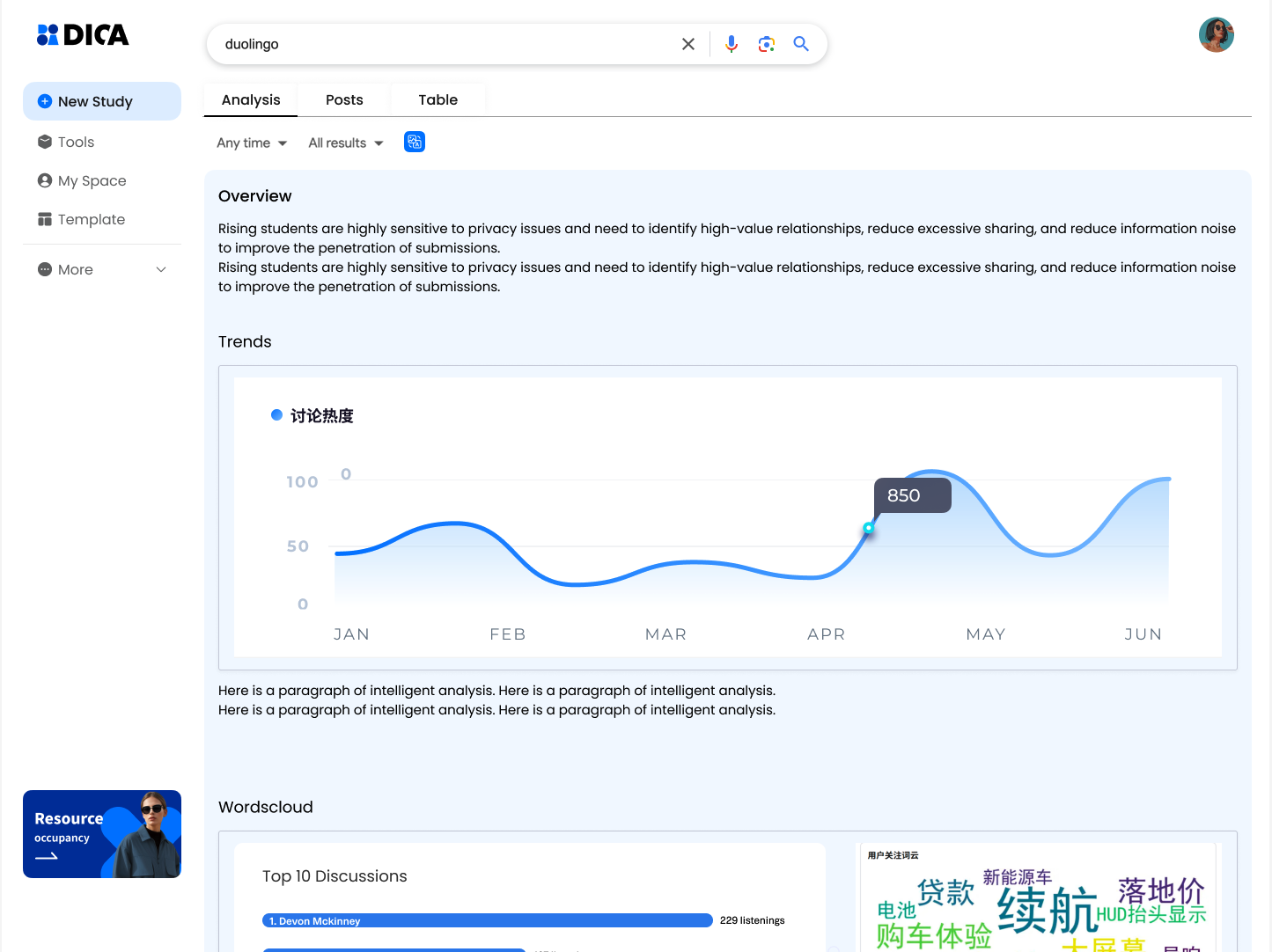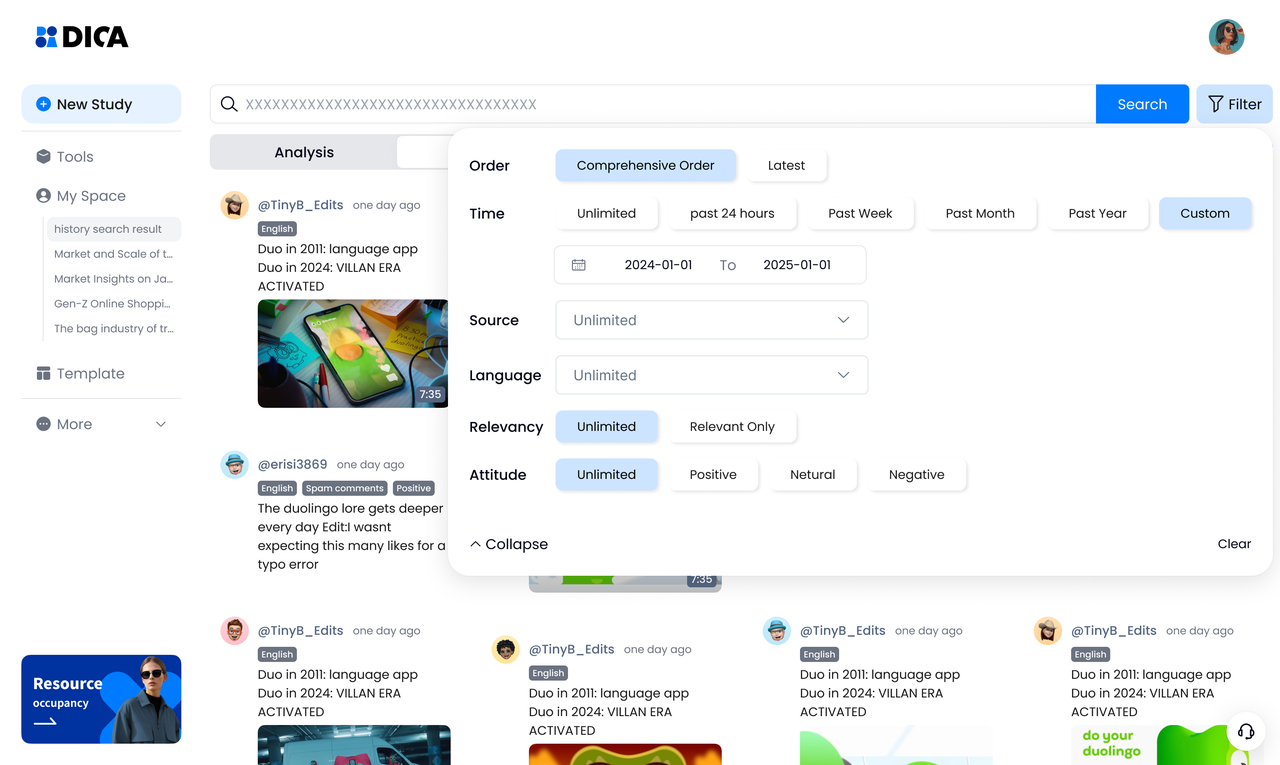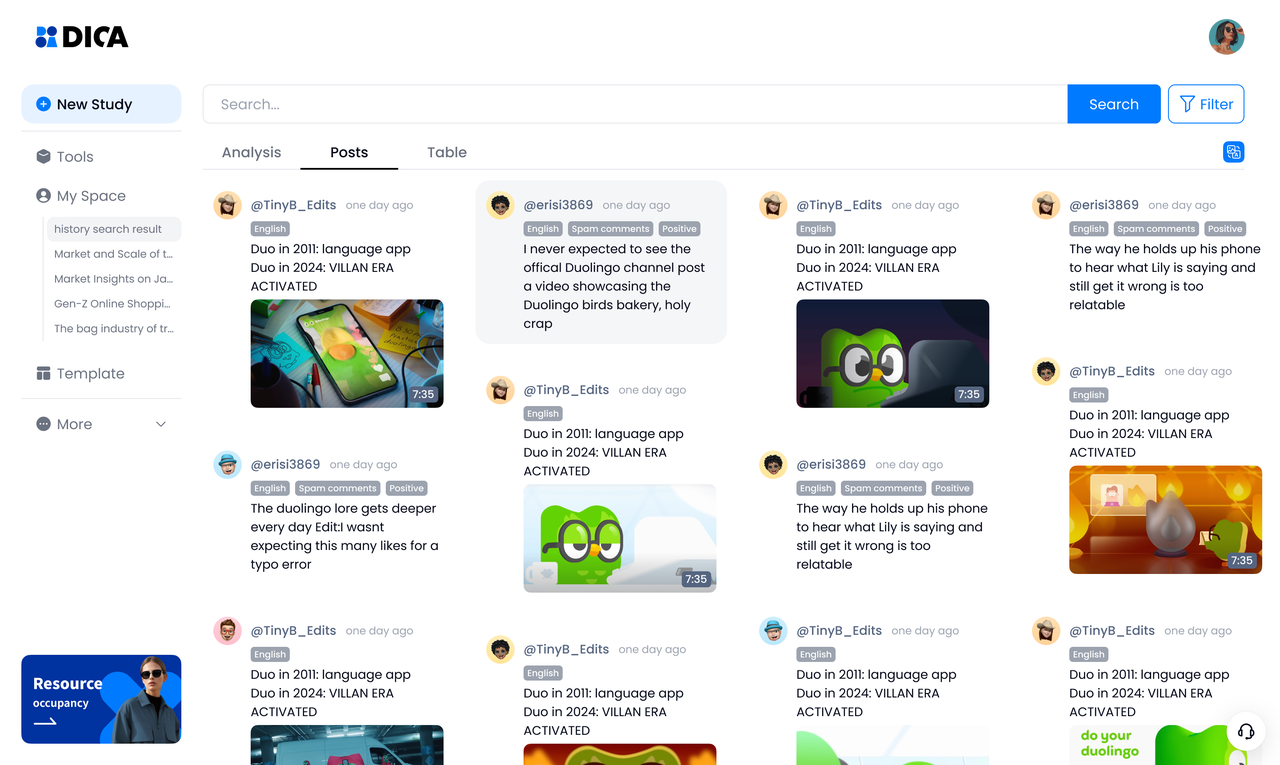Wednesday, January 22, 2025
How Social Media Research Tools Can Help You Listen to Your Users

In today’s fast-paced digital world, understanding your audience is critical to staying competitive. Social media platforms are rich sources of user insights, offering businesses an opportunity to track trends, monitor sentiment, and refine their strategies based on real-time data. However, with the vast amount of information available, manually sifting through it is nearly impossible. This is where social media research tools come into play, providing businesses with the analytical power needed to make informed decisions.
1. What Are Social Media Research Tools?
Social media research tools are advanced software solutions designed to collect and analyze data from platforms like Instagram, Facebook, TikTok, and more. They help businesses monitor conversations, track brand mentions, and gain a deeper understanding of customer preferences and industry trends. Unlike basic scheduling tools, these research-focused platforms leverage sophisticated data analysis techniques to uncover actionable insights, giving businesses a strategic advantage.
By using these tools, companies can keep a pulse on the market, identify emerging trends, and improve their engagement strategies. The result? More targeted marketing efforts, improved customer satisfaction, and a stronger brand presence in the digital landscape.

2. Statistical Methods Used in Social Media Research
To transform raw social media data into actionable insights, social media research tools employ various statistical methods. Three of the most commonly used analytical techniques include:
2.1 Sentiment Analysis
One of the most powerful techniques, sentiment analysis, evaluates the emotional tone of social media content. By analyzing customer comments, reviews, and posts, businesses can identify whether public sentiment is positive, negative, or neutral. This helps brands address concerns, amplify positive experiences, and refine their messaging strategies.
2.2 Predictive Analytics
Another critical method is predictive analytics, which uses historical data and machine learning algorithms to forecast future trends and customer behavior. This allows brands to anticipate market shifts and proactively adjust their strategies to stay ahead of the competition.
2.3 Descriptive Analytics
Descriptive analytics provides a summary of historical data, presenting trends, patterns, and insights through visual reports and dashboards. Businesses can use these findings to understand past performance and refine their strategies moving forward.
Other methods such as A/B testing and conjoint analysis are also commonly employed to further optimize marketing efforts.
3. Mainstream Tool Examples
Two widely known platforms in the market—Later and Buffer—offer social media management solutions that focus primarily on content scheduling and engagement tracking.
Later, for instance, provides a visual content calendar that allows users to plan and automate posts across different platforms. Features such as hashtag suggestions and Link in Bio are helpful for driving traffic. However, Later lacks in-depth social listening and advanced analytics capabilities, which means businesses might miss valuable insights beyond basic engagement metrics.
Similarly, Buffer is another popular social media management tool that excels in scheduling and performance tracking. While it provides basic engagement analytics, it falls short in offering comprehensive audience research and competitive analysis. Buffer is better suited for brands looking to streamline content workflows rather than for those needing deeper customer insights.
While both Later and Buffer offer useful tools, businesses seeking AI-driven insights and multi-platform data analysis will find them lacking. This is where DICA stands out.
4. Introducing DICA's Social Media Research Tools
Unlike Later and Buffer, DICA goes beyond simple scheduling and engagement tracking. It is an AI-powered research tool that helps businesses extract valuable insights from social media platforms by collecting and analyzing data across multiple channels.
4.1 What Is DICA?
DICA is an advanced AI-driven platform that specializes in tracking keyword trends and monitoring user sentiment across social media. With its proprietary AI algorithms, it efficiently gathers and processes content, offering businesses deep insights through multi-modal searches and comprehensive reports. Whether it's text, images, or videos, DICA ensures no relevant data is overlooked.
4.2 How DICA Can Be Used
DICA serves three primary purposes:
-
Monitoring: It continuously tracks brand mentions, industry discussions, and customer conversations across various platforms, providing businesses with a comprehensive overview of their online presence.
-
Listening: Understanding what customers are saying is crucial for any brand. DICA helps businesses uncover user sentiments, identify concerns, and highlight areas for improvement.
-
Customer Analysis: With DICA, brands can analyze audience demographics, preferences, and behaviors to fine-tune their marketing strategies.
4.3 Key Outputs of DICA’s Social Media Research Tools
DICA provides businesses with three essential types of outputs to maximize their social media research efforts:
-
Analysis: DICA offers an in-depth analysis that includes an overview of hot topics, high-frequency keywords, and word clouds to help businesses understand trending conversations. The tool also provides insights into overall discussion trends, tracking both positive and negative sentiment changes, and offers an analysis of what users care about most through original user discussions and hot topic trends.
-
Post Tracking: With DICA, brands can get detailed breakdowns of their social media posts, monitoring audience engagement and responses to optimize content strategies effectively.
-
Structured Data Tables: DICA presents data in an easy-to-understand table format, allowing businesses to filter, export, and dive deeper into their social media performance.

4.4 Why Choose DICA?
DICA stands out from competitors due to its unique advantages:
-
Comprehensive Platform Coverage: Unlike other tools, DICA covers not only global platforms such as Instagram, Facebook, and LinkedIn but also Chinese platforms like Rednote.
-
Multi-Modal Content Retrieval: It analyzes text, images, and video content, providing a 360-degree view of brand mentions and discussions.
-
AI-Powered Insights: DICA generates reports with speed and precision, delivering actionable insights within just 60 minutes.
-
User-Friendly Interface: Businesses can easily explore the latest trends by simply entering relevant keywords, making it accessible for all users.
-
Flexible Filtering: The tool offers customizable filters, enabling businesses to analyze data by time, sentiment, and platform.
5. Conclusion
Failing to adopt a comprehensive social media research tool can result in businesses making uninformed decisions, missing critical market trends, and losing valuable opportunities to engage with their audience. Relying solely on tools like Later or Buffer may give a surface-level understanding of social media performance, but they lack the in-depth audience insights that brands need to drive growth.
If you're ready to unlock the full potential of social media data, request a demo today and discover how DICA can revolutionize your approach to social media research.
Related articles




